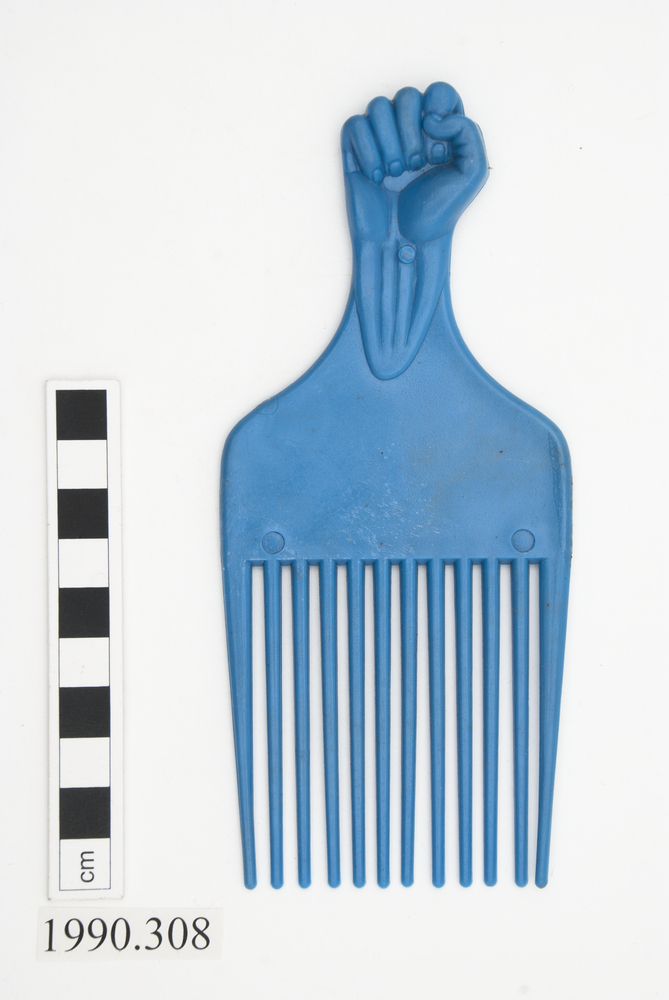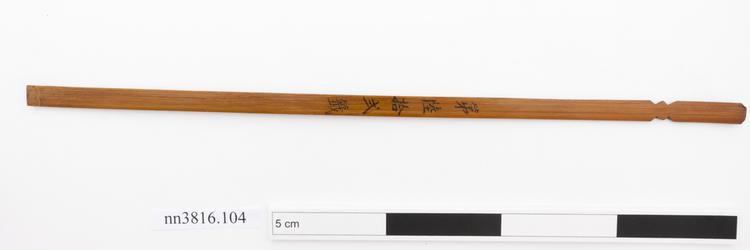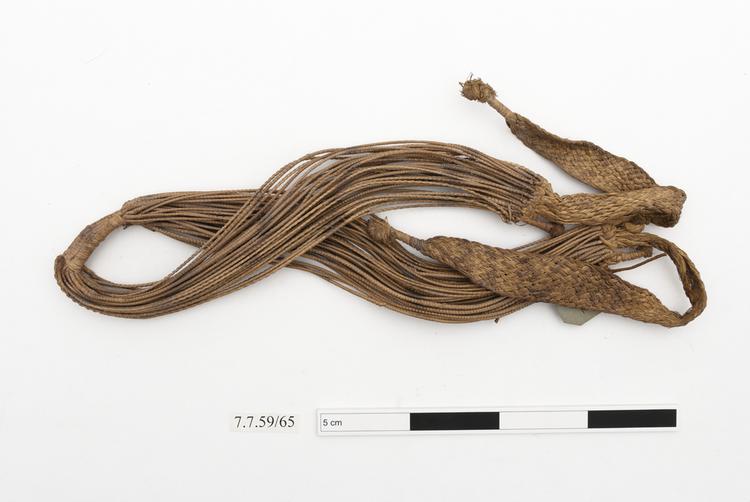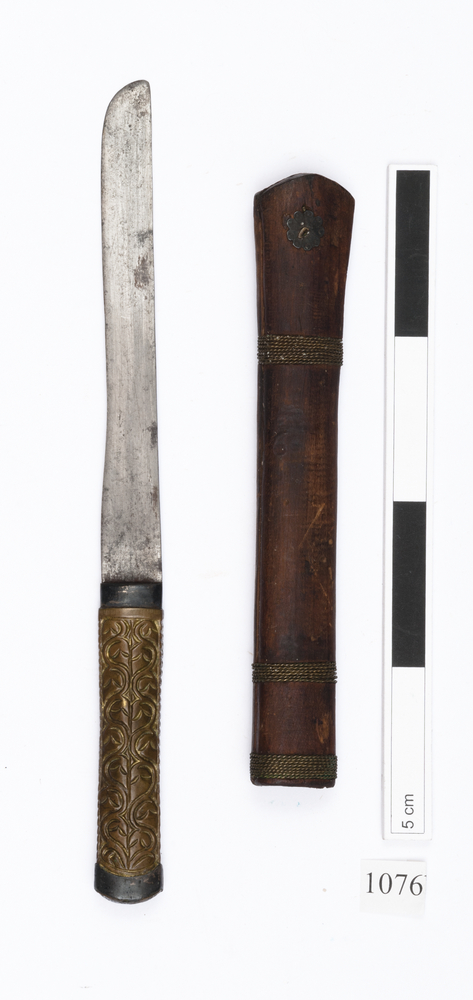
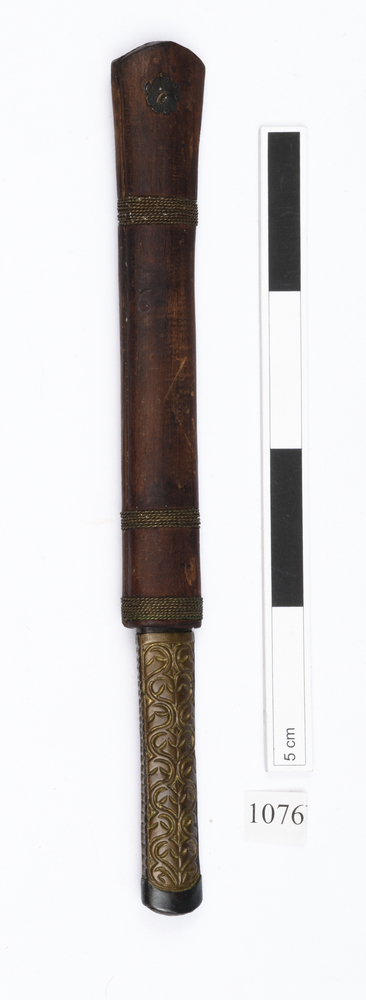
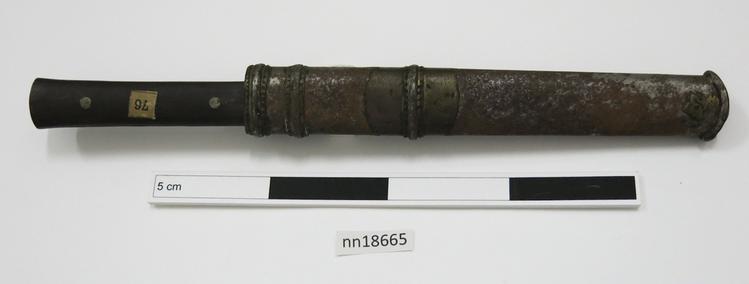
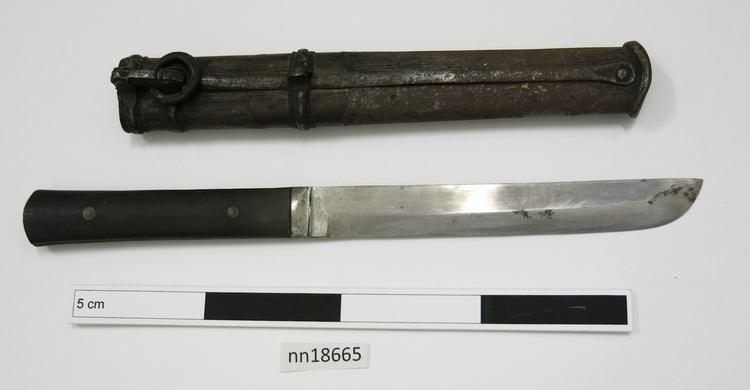
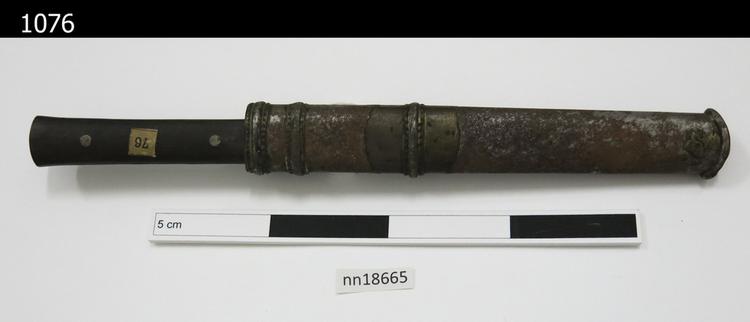
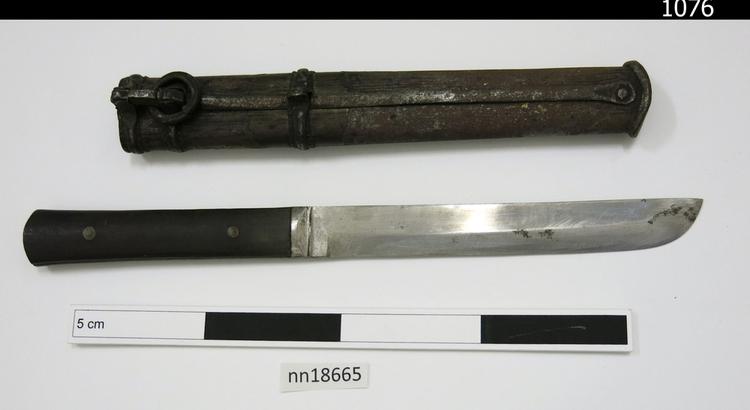
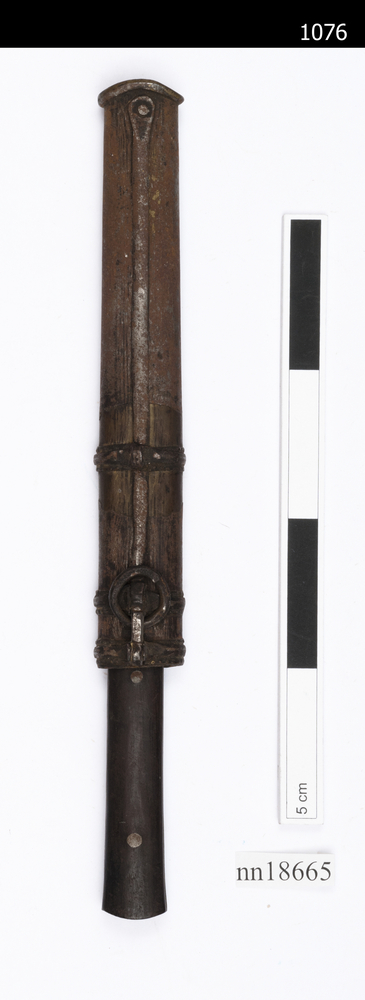
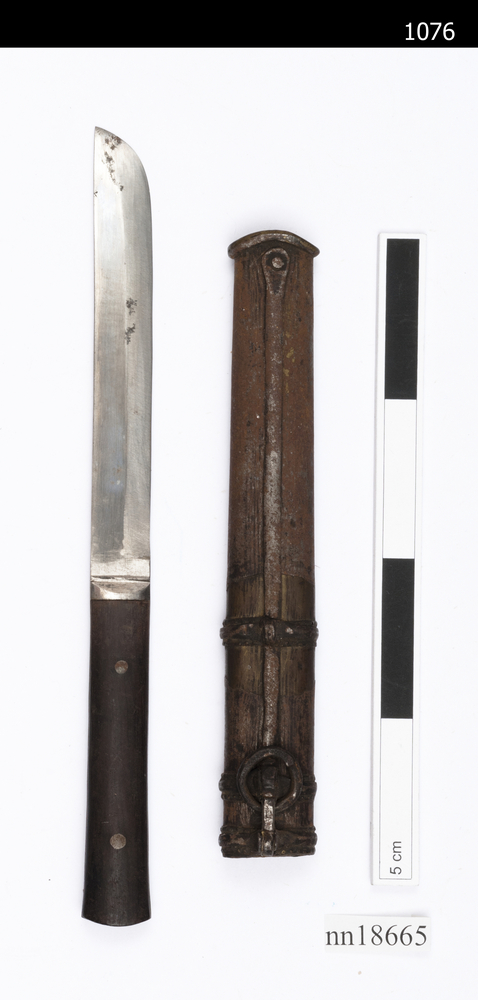
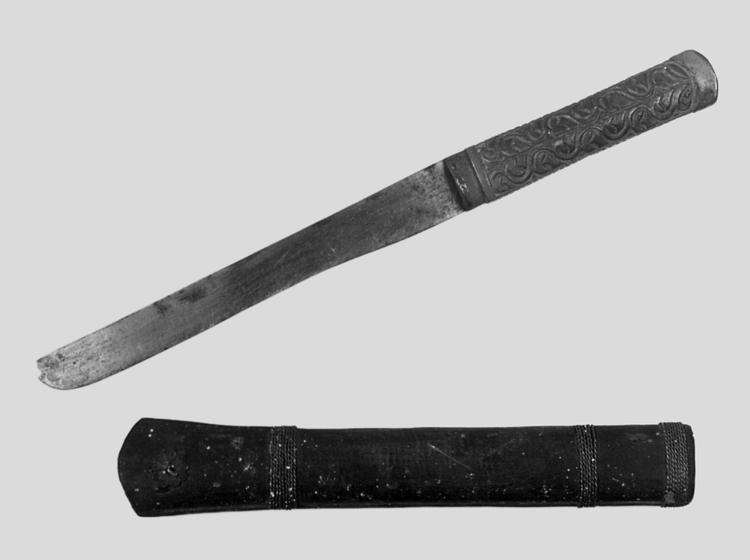
Two knives and sheaths. One knife has a steel blade and an ornate brass handle. The sheath is made of wood, with bands of metal wire around it and a small metal flower-shaped plaque at the top. The other knife has a sheath with a metal loop. The style of both knives suggest that they were manufactured on the marches between Tibet and Yunan Province.
fighting



